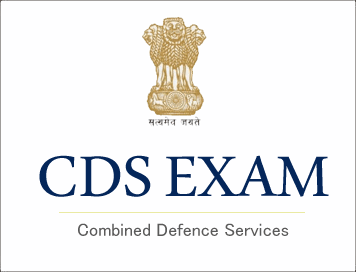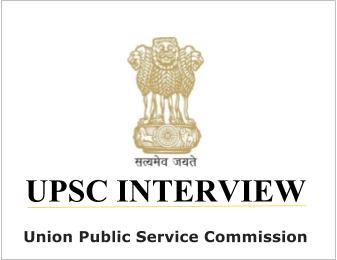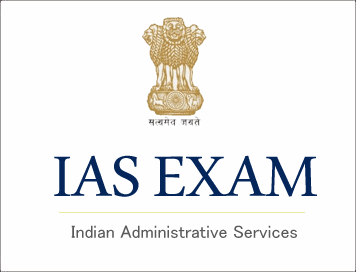
ANSWER KEYS of UPSC Prelims Exam 2017
General Studies-2 (CSAT) Paper (SET-B)
Test Booklet Series: B
Directions for the following 8 (eight) items : Read the following seven passages and answer the items that follow the passages. Your answers to these items should be based on the passages only.
Passage -1
Disruption of traditional institutions, identifications and loyalties is likely to lead to ambivalent situations. It is possible that some people may renew their identification
with traditional groups whereas others align themselves with new groups and symbols emergent from processes of political development. In addition, political development tends to foster group awareness of a variety of class, tribe, region, clan, language, religion, occupation and others.
1. Which one of the following is the best explanation of the above passage?
(a) Political development is not a unilinear process for it involves both growth and decay.
(b) Traditional societies succeed in resisting positive aspects of political development.
(c) It is impossible for traditional societies to break away from lingering loyalties.
(d) Sustenance of traditional loyalties is conducive to political development.
Answer : A
Passage - 2
There has been a significant trend worldwide towards regionalism in government, resulting in a widespread transfer of powers downwards towards regions and
communities since 1990s. This process, which involves the creation of new political entities and bodies at a sub-national level and an increase in their content
and powers, is known as devolution. Devolution has been characterized as being made up of three factors—political legitimacy, decentralization of authority
and decentralization of resources. Political legitimacy here means a mass demand from below for the decentralization process, which is able to create a political force for it to take place. In many cases, decentralization is initiated by the upper tier of government without sufficient political mobilization for it at the grassroots level, and in such cases the decentralization process often does not fulfil its objectives.
2. Which among the following is the most logical, rational and critical inference that can be made from the above passage?
(a) Emergence of powerful mass leaders is essential to create sub-national political entities and thus successful devolution decentralization.
(b) The upper tier of government should impose devolution and decentralization on the regional communities by law or otherwise.
(c) Devolution, to be successful, requires a democracy in which there is free expression of the will of the people at lower level and their active participation at the grassroots level.
(d) For devolution to take place, a strong feeling of regionalism in the masses is essential.
Answer : C
Passage - 3
We live in digital times. The digital is not just something we use strategically and specifically to do a few tasks. Our very perception of who we are, how we connect
to the world around us, and the ways in which we define our domains of life, labour and language are hugely structured by the digital technologies. The digital is everywhere and, like air, invisible. We live within digital systems, we live with intimate gadgets, we interact through digital media, and the very presence and imagination of the digital has dramatically restructured our lives. The digital, far from being a tool, is a condition and context that defines the shapes and boundaries of our understanding of the self, the society, and the structure of governance.
3. Which among the following is the most logical and essential message conveyed by the above passage?
(a) All problems of governance can be solved by using digital technologies.
(b) Speaking of digital technologies is speaking of our life and living.
(c) Our creativity and imagination cannot be expressed without digital media.
(d) Use of digital systems is imperative for the existence of mankind in future.
Answer : B
Passage -4
The IMF has pointed out that the fast growing economies of Asia face the risk of falling into `middle-income trap’. It means that average incomes in these countries, which till now have been growing rapidly, will stop growing beyond a point—a point that is well short of incomes in the developed West. The IMF identifies a number of causes of middleincome trap—none of which is surprising— from infrastructure to weak institutions, to less macroeconomic conditions. overall
cause, says IMF, is growth of productivity.
4. Which among the following is the most logical, rational and critical inference that can be made from the above passage?
(a) Once a country reaches middleincome stage, it runs the risk of falling productivity which leads to stagnant incomes.
(b) Falling into middle-income trap is a general characteristic of fast growing economies.
(c) There is no hope at all for emerging Asian economies to sustain the growth momentum.
(d) As regards growth of productivity, the performance of Asian economies is not satisfactory
Answer : D
Passage - 5
An innovative India will be inclusive as well as technologically advanced, improving the lives of all Indians. Innovation and R&D can mitigate increases in social inequality and relieve the pressures created by rapid urbanization. The growing divergence in productivity between agriculture and
knowledge-intensive manufacturing and services threatens to increase income inequality. By encouraging India’s R&D labs and universities to focus on the needs of poor people and by improving the ability of informal firms to absorb knowledge, an innovation and research agenda can counter this effect. Inclusive innovation can
lower the costs of goods and services and create income-earning opportunities for the poor people.
5. Which among the following is the most logical and rational assumption that can be made from the above passage?
(a) Innovation and R&D is the only way to reduce rural to urban migration.
(b) Every rapidly growing country needs to minimize the divergence between productivity in agriculture and other sectors.
(c) Inclusive innovation and R&D can help create an egalitarian society.
(d) Rapid urbanization takes place only when a country’s economic growth is rapid.
Answer : C
Passage - 6
Climate change is likely to expose a large number of people to increasing environmental risks forcing them to migrate. The international community is yet
to recognize this new category of migrants. There is no consensus on the definition and status of climate refugees owing to the distinct meaning the term refugees carry under international laws. There are still gaps in understanding how climate change will work as the root cause of migration. Even if there is recognition of climate refugees, who is going to provide protection? More emphasis has been given to international migration due to climate change. But there is a need to recognize the migration of such people within the countries also so that their problems can be addressed properly.
6. Which of the following is the most rational inference from the above passage?
(a) The world will not be able to cope with large-scale migration of climate refugees
(b) We must find the ways and means to stop further climate change.
(c) Climate change will be the most important reason for the migration of people in the future.
(d) Relation between climate change and migration is not yet properly understood.
Answer : D
Passage - 7
Many farmers use synthetic pesticides to kill infesting insects. The consumption of pesticides in some of the developed countries is touching 3000 grams/hectare.
Unfortunately, there are reports that these compounds possess inherent toxicities that endanger the health of the farm operators, consumers and the environment. Synthetic pesticides are generally persistent in environment. Entering in food chain they destroy the microbial diversity and cause ecological imbalance. Their indiscriminate use has resulted in development of resistance among insects to insecticides, upsetting of balance in nature and resurgence of treated populations. Natural pest control using the botanical pesticides is safer to the user and the environment because they break down into harmless
compounds within hours or days in the presence of sunlight. Plants with pesticidal properties have been in nature for millions of years without any ill or adverse effects on the ecosystem. They are easily decomposed by many microbes common in most soils. They help in the maintenance of biological
diversity of predators and the reduction of environmental contamination and human health hazards. Botanical pesticides formulated from plants are biodegradable
and their use in crop protection is a practical sustainable alternative.
7. On the basis of the above passage, the following assumptions have been made :
1. Synthetic pesticides should never be used in modern agriculture.
2. One of the aims of sustainable agriculture is to ensure minimal ecological imbalance.
3. Botanical pesticides are more effective as compared to synthetic pesticides.
Which of the assumptions given above is/are correct?
(a) 1 and 2 only
(b) 2 only
(c) 1 and 3 only
(d) 1, 2 and 3
Answer : B
8. Which of the following statements is/ are correct regarding biopesticides?
1. They are not hazardous to human health.
2. They are persistent in environment.
3. They are essential to maintain the biodiversity of any ecosystem.
Select the correct answer using the code given below.
(a) 1 only
(b) 1 and 2 only
(c) 1 and 3 only
(d) 1, 2 and 3
Answer : A
9. Certain 3-digit numbers have the following characteristics :
1. All the three digits are different.
2. The number is divisible by 7.
3. The number on reversing the digits is also divisible by 7.
How many such 3-digit numbers are there?
(a) 2
(b) 4
(c) 6
(d) 8
Answer : B
10. Examine the following statements :
1. All colours are pleasant.
2. Some colours are pleasant.
3. No colour is pleasant.
4. Some colours are not pleasant.
Given that statement 4 is true, what can be definitely concluded?
(a) 1 and 2 are true.
(b) 3 is true.
(c) 2 is false.
(d) 1 is false.
Answer : D








